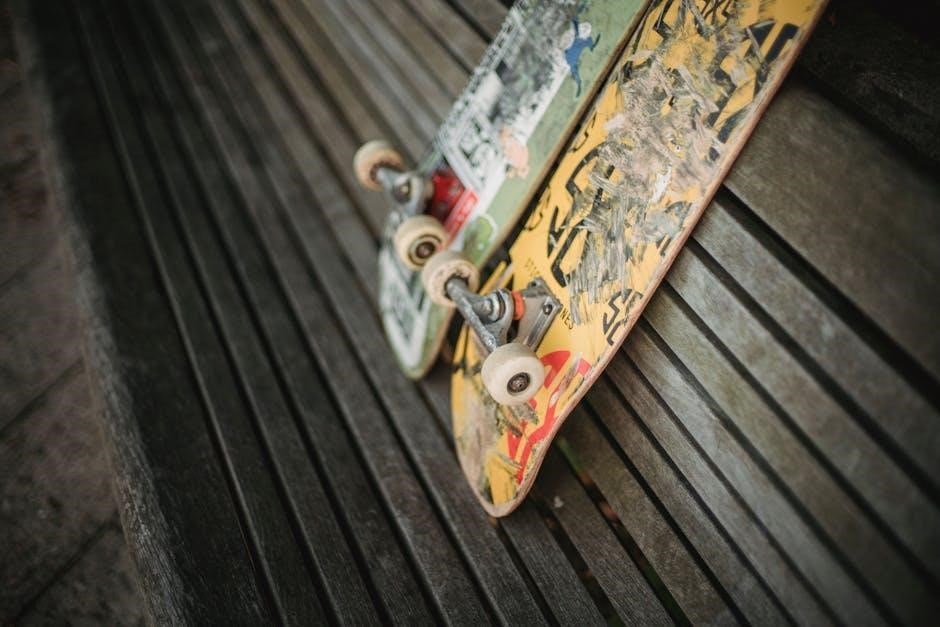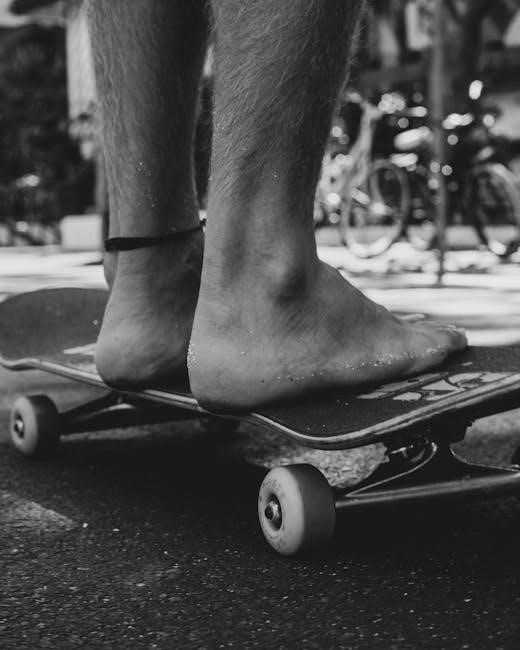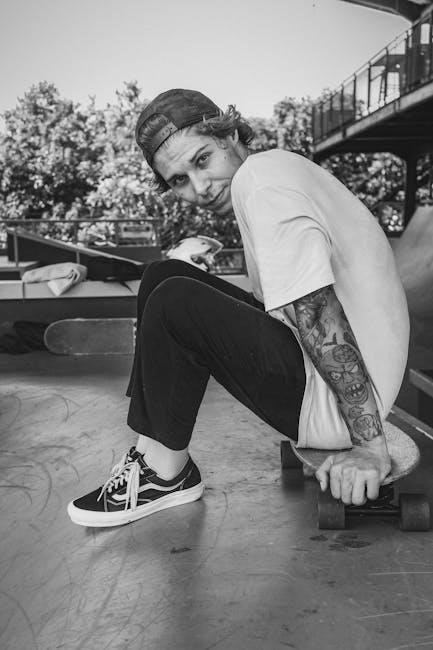Understanding Skateboard Wheels: A Comprehensive Guide

Discover the essentials of skateboard wheels, from size and hardness to shape and material. Learn how these factors impact performance, and find the perfect setup for your skating style and preferences.

Skateboard wheels are a fundamental component of your setup, directly influencing how your board performs. Made from polyurethane, these wheels come in various sizes, shapes, and hardness levels, each designed for specific skating styles. Whether you’re cruising, performing tricks, or grinding, the right wheels can enhance your experience. Understanding factors like durometer ratings, wheel size, and core design is crucial for selecting the perfect fit. This guide will walk you through everything you need to know about skateboard wheels, helping you make informed decisions for your unique riding preferences. From the basics of hardness and size to advanced features like lip design and bearing seats, we’ll cover it all. By the end of this guide, you’ll be equipped with the knowledge to optimize your skateboard for the ultimate riding experience.

Durometer Ratings Explained
Durometer ratings are a critical factor in determining the performance of skateboard wheels. Measured on the Shore durometer scale, this rating indicates the hardness of the polyurethane material. A higher durometer number means a harder wheel, which is ideal for tricks and street skating as it provides better resistance to wear and a faster ride. Softer wheels, with a lower durometer rating, are preferred for cruising and rough surfaces, offering greater grip and shock absorption. Common ratings range from 78A to 101A, with most skateboarders opting for wheels between 95A and 101A for street skating and 78A to 87A for cruisers. Understanding durometer ratings helps you choose wheels that match your skating style, ensuring optimal performance, durability, and comfort. This guide delves into how these ratings impact your ride, helping you make an informed decision for your next setup.

Wheel Size and Its Impact
Wheel size plays a pivotal role in determining the performance and feel of your skateboard. Typically measured in millimeters, common sizes range from 50mm to 75mm in diameter. Smaller wheels (50-54mm) are ideal for street skating and tricks, as they are lighter and more maneuverable, allowing for easier flips and grinds. Mid-sized wheels (55-59mm) offer a balanced experience, suitable for both tricks and cruising, providing a mix of speed and control. Larger wheels (60mm and above) are best for cruising and longboarding, offering higher speeds and smoother rides on rough surfaces. The size you choose should align with your skating style and the terrain you frequent. Proper wheel size ensures optimal performance, whether you’re carving through streets or racing downhill, making it essential to select the right diameter for your setup and preferences. This guide helps you understand how wheel size impacts your skating experience and how to choose the best fit for your needs.
Wheel Shape and Lip Design
Wheel shape and lip design significantly influence how your skateboard performs. The shape refers to the profile of the wheel, while the lip design determines how the wheel interacts with the ground. Round lips are common on most skateboard wheels and are designed for speed and smooth transitions, making them ideal for tricks and slides. Square lips, often found on softer wheels, provide more grip and stability, which is beneficial for cruising and carving. The shape can also affect the wheel’s durability and how it wears over time. A rounded shape offers a larger contact patch for better control, while a more squared shape enhances traction. Lip design plays a crucial role in maintaining stability at higher speeds and ensuring consistent performance across various surfaces. Understanding these factors helps you choose wheels that align with your skating style and terrain preferences, ensuring a more enjoyable and responsive ride.
Material Quality and Polyurethane
Material quality is a critical factor in determining the performance and longevity of skateboard wheels. Polyurethane is the standard material used for skateboard wheels due to its exceptional durability, flexibility, and ability to absorb shock. High-quality polyurethane ensures a smoother ride, better grip, and increased resistance to wear and tear. Softer polyurethane wheels, typically with lower durometer ratings, provide more cushioning and are ideal for cruising and rough surfaces. Harder polyurethane wheels, with higher durometer ratings, are more rigid and suited for tricks and slides. The quality of the polyurethane also affects how well the wheels handle heat and friction, which is crucial for maintaining speed and control during intense skating sessions. Cheaper materials may save costs but often compromise on performance and durability. Investing in premium polyurethane wheels ensures a better skating experience and extends the lifespan of your setup, making it a worthwhile investment for both casual and professional skaters.
Core Design and Its Effects
The core design of a skateboard wheel plays a significant role in its overall performance. The core is the inner, typically plastic, structure that surrounds the bearing seat and supports the polyurethane. A well-designed core ensures proper heat dissipation, which is crucial for maintaining speed and preventing the wheel from deforming under stress. Different core designs can influence factors such as weight, durability, and responsiveness. For example, a lighter core may enhance speed and agility, while a more robust core might improve stability at higher speeds. Some wheels feature unique core shapes or materials that are engineered to optimize specific skating styles, such as street, park, or cruiser skating. A poorly designed core can lead to uneven wear, reduced grip, and a less predictable ride. Therefore, the core design is a critical component that directly impacts how the wheel performs under various conditions and skating techniques.

Bearing Seat and Performance
The bearing seat is a critical component of a skateboard wheel, as it directly impacts the wheel’s performance and longevity. Located within the core, the bearing seat is the area where the bearings are housed and secured. A well-designed bearing seat ensures proper alignment and prevents the bearings from shifting or popping out during use. This is essential for maintaining smooth rolling and consistent speed. The depth and material of the bearing seat can also influence how tightly the bearings fit, with tighter fits often providing better stability and responsiveness. Additionally, some wheels feature specialized bearing seats with built-in spacers or labyrinth lips to protect the bearings from dust and debris, which can degrade performance over time; A poorly designed bearing seat, on the other hand, can lead to uneven wear, reduced efficiency, and a higher risk of bearing failure. Thus, the bearing seat plays a vital role in optimizing the overall skating experience.
Skating Style and Wheel Selection
Choosing the right skateboard wheels begins with understanding your skating style and preferences. For street skating, smaller wheels (typically between 48-54mm) with higher durometer ratings (95A-101A) are ideal, offering durability and responsiveness for tricks and grinds. Cruisers, on the other hand, benefit from larger, softer wheels (56mm and above, 78A-87A) for a smoother ride and better grip on various surfaces. Longboarders often opt for even larger wheels (60mm+) with soft durometer ratings for maximum speed and stability during downhill rides or commutes. Each style demands specific wheel characteristics to enhance performance and comfort, making it crucial to align your choice with how you skate. By considering your primary skating activity and personal preferences, you can select wheels that optimize your experience, ensuring better control, speed, and overall enjoyment on the board.
Top Brands in Skateboard Wheels
When it comes to skateboard wheels, several top brands stand out for their quality, innovation, and performance. Spitfire Wheels is a favorite among street skaters, known for their durable and fast wheels designed for tricks and grinds. Bones Wheels offers a wide range of options, including the iconic Bones 100s, which are praised for their speed and versatility. Ricta Wheels is another trusted name, specializing in soft wheels ideal for cruising and rough terrain. Other notable brands include Santa Cruz, known for their classic designs and high-quality urethane, and OJ Wheels, which offers a variety of styles to suit different skating preferences. These brands have built reputations for delivering consistent performance, whether you’re skating streets, parks, or cruising around town. By choosing a reputable brand, you ensure your wheels are made with premium materials and designed to meet the demands of your skating style.

Maintenance and Care Tips

Proper maintenance is key to extending the life of your skateboard wheels and ensuring optimal performance. Regularly clean your wheels to remove dirt, debris, and grime, which can affect grip and speed. Use a soft brush or cloth and mild soap to wipe down the wheels. Avoid harsh chemicals that might damage the polyurethane. Check your bearings frequently and clean them with a citrus-based cleaner to remove dust and grime; Properly lubricate the bearings with a water-resistant skate lubricant to maintain smooth rolling. Store your skateboard in a cool, dry place to prevent the wheels from becoming brittle or warped. Avoid skating in extreme temperatures, as this can affect the durometer rating and performance of your wheels. By following these care tips, you’ll keep your wheels in great condition and ensure a smoother, more enjoyable ride.
Safety Considerations
When it comes to skateboard wheels, safety should always be a top priority. Properly installed and maintained wheels are essential to prevent accidents. Always ensure your wheels are securely attached to the board using the correct hardware, and avoid riding with loose or damaged wheels. Inspect your wheels regularly for signs of wear, such as uneven surfaces or cracks, and replace them if necessary. Riding on worn-out wheels can lead to reduced control and increased risk of falls. Additionally, be mindful of the surfaces you skate on—avoid rough or uneven terrain that could cause unexpected stops or skidding. Wearing proper protective gear, including a helmet, knee pads, and elbow pads, is crucial for safety, regardless of your skill level. By adhering to these guidelines, you can minimize risks and enjoy a safer, more enjoyable skating experience.
Installation Guide

Installing skateboard wheels is a straightforward process that requires basic tools and attention to detail. Start by gathering your tools: a skate tool or Allen wrench, and optionally, a screwdriver. Remove the old wheels by unscrewing the axle nuts using your skate tool. Once the nuts are off, pull the wheels away from the axle. Next, clean the axle to ensure a smooth fit for the new wheels. Take your new wheels and slide them onto the axle, making sure they are properly seated. Replace the axle nuts and tighten them firmly, but avoid overtightening, as this can damage the bearings; Repeat the process for all four wheels. Finally, test your board by rolling it back and forth to ensure everything feels smooth and even. Proper installation ensures optimal performance and safety while skating.
